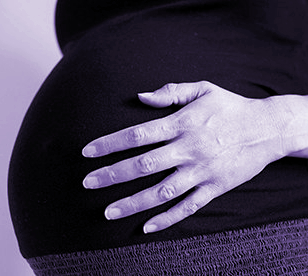Research offers migrant birth help
 Experts say communication is key to reducing stillbirth in migrant and refugee communities.
Experts say communication is key to reducing stillbirth in migrant and refugee communities.
One-third of all women giving birth in Australia are born overseas, with the majority of migrant women coming from a country where English is not the main language.
This equates to over 80,000 women of non-English speaking background giving birth in Australia each year.
There are persistent equity gaps in stillbirth rates between women born in Australia and those who come from overseas, or those who are Aboriginal and Torres Strait Islander people.
“Migration and settlement experiences are often characterised by social isolation and economic disadvantage,” says Associate Professor Jane Yelland, a Senior Research Fellow at the Intergenerational Health Research Group at the Murdoch Children’s Research Institute.
“Individuals of refugee background with experiences of torture and trauma face additional hardships around the time of pregnancy, exacerbated by limited English proficiency and low health literacy.”
Overcoming communication barriers is key to reducing stillbirth rates in migrant and refugee communities, she wrote.
“Women of migrant and refugee background are at risk of missing critical information about ways to optimise their health and that of their baby.
“Messages about sleep position, smoking cessation, management of diabetes, warning signs of pregnancy complications, and when and how to seek help need to be communicated in ways that will be both easy to understand and meaningful in the context of women’s lives and prior experiences of health services.”
Dr Yelland and colleagues are conducting a study in which women are attending group pregnancy care with a multidisciplinary team as an innovative way to overcome communication barriers and improve access to high quality antenatal care.
The team includes clinical midwives, maternal and child health nurse, an interpreter and a bi-cultural worker.
“Early findings suggest that the combination of care close to where women live, access to both an interpreter and a bicultural worker, and the orientation to provide information in ways that is asked for by women are resulting in greater uptake and retention of health information, including information about when and how to seek help related to pregnancy,” she said.
“We believe that understanding what matters to women and communities new to Australia is fundamental to health care reform to end preventable stillbirth.
“It is clear that new clinical and service interventions will only work when informed by service staff and health consumers, and both are engaged in the process of change.”
Her latest study is published in the Medical Journal of Australia.







 Print
Print